Tropical houseplants have a unique charm — their lush leaves, vibrant colors, and exotic appearance can instantly transform any indoor space into a tranquil oasis. However, keeping these plants healthy and thriving indoors can sometimes be a challenge, especially when it comes to maintaining the right humidity levels.
Humidity plays a vital role in the life of tropical plants. Most of them originate from rainforests where the air is warm and saturated with moisture, providing the perfect environment for dense, glossy foliage and steady growth. When moved indoors, especially in homes with air conditioning or heating, the air tends to become dry — creating stress for tropical species that crave moisture.
In this article, we’ll explore why humidity is so important, how to measure and adjust it, and practical ways to manage humidity levels for your tropical houseplants so they can flourish all year long.
1. Why Humidity Matters for Tropical Houseplants
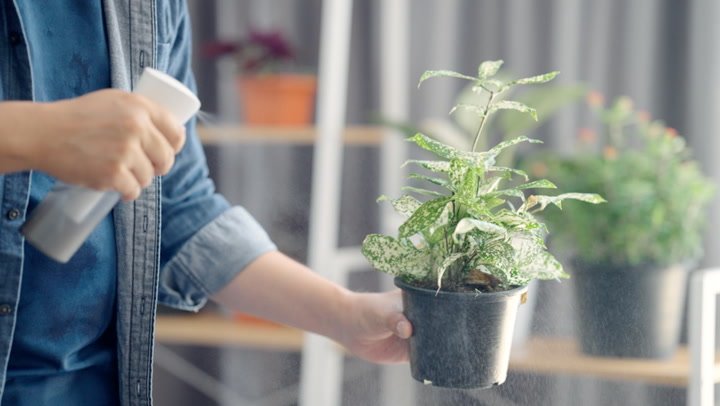
Humidity refers to the amount of water vapor in the air. Most tropical houseplants — such as monstera, calathea, bird of paradise, and ferns — thrive best in environments where humidity levels range from 60% to 80%.
When the air around them is too dry, their leaves can lose moisture faster than they can absorb it, leading to common problems like:
- Browning or crisping leaf edges
- Drooping or curling leaves
- Slower growth
- Increased susceptibility to pests like spider mites
On the other hand, too much humidity without proper air circulation can lead to fungal problems, mold, or root rot. Therefore, managing humidity is about finding the perfect balance — moist enough for lush foliage but not so damp that disease thrives.
2. Measuring Humidity Levels Indoors
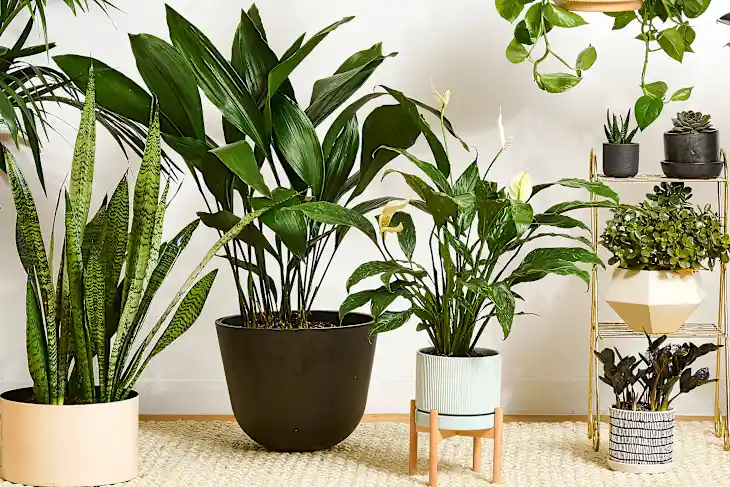
Before you adjust humidity levels, it’s essential to know what you’re working with. The easiest way to measure indoor humidity is with a digital hygrometer — a small, affordable device that gives accurate real-time readings.
How to Use a Hygrometer:
- Place it near your plants but not directly on top of the soil.
- Observe readings at different times of day — humidity may drop significantly when heaters or ACs are running.
- Note that humidity is typically highest in the morning and lowest in the afternoon.
For tropical plants, if your hygrometer consistently reads below 50%, you’ll need to boost humidity using some of the strategies below.
3. Increase Humidity Naturally: Grouping Plants Together
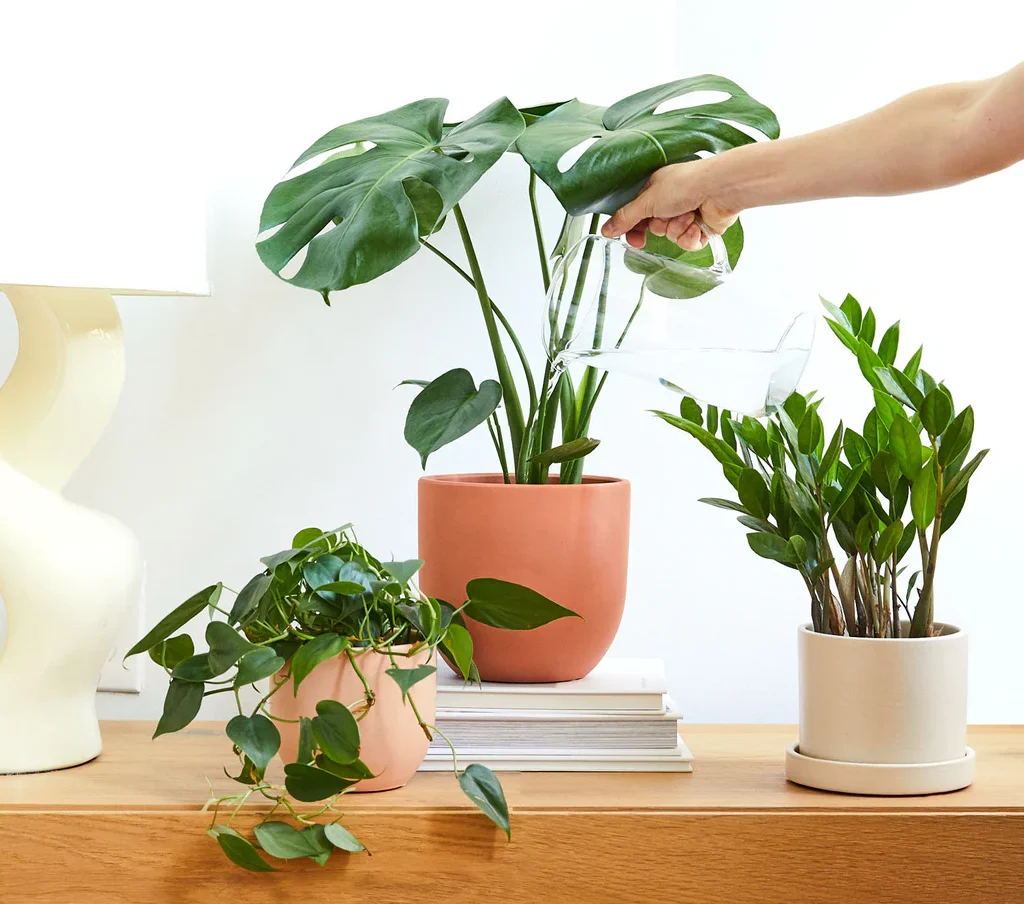
One of the easiest and most natural ways to raise humidity for your tropical plants is by grouping them closely together.
When plants transpire — releasing moisture from their leaves — they create a mini microclimate of higher humidity around them. By clustering several plants, especially tropical varieties, you can create a naturally humid pocket of air that benefits all of them.
Best Spots for Grouped Plants:
- Corners near windows where sunlight is bright but indirect.
- Away from air vents or heaters that can dry out the air.
- On plant stands with pebble trays (explained below) for extra effect.
Grouping also helps recreate the feeling of a dense rainforest canopy — both for your plants and for your aesthetic!
4. Use Pebble Trays for Gentle Humidity Boost
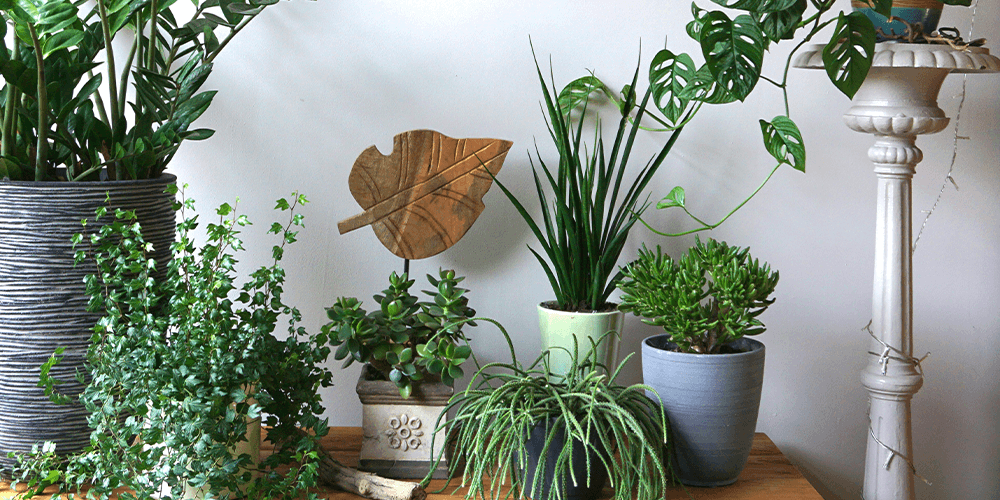
Pebble trays are a simple, budget-friendly way to increase humidity directly around your plants without overwatering them.
How to Make a Pebble Tray:
- Take a shallow tray or dish larger than your plant pot.
- Fill it with small stones or decorative pebbles.
- Add water just below the top of the pebbles — not enough to touch the pot’s base.
- Place your plant pot on top of the pebbles.
As the water in the tray evaporates, it increases humidity around the plant. This micro-humid environment can make a noticeable difference for moisture-loving plants like ferns, calatheas, and alocasias.
5. Invest in a Humidifier for Consistent Results
For those who grow a large collection of tropical houseplants or live in dry climates, a humidifier is the most reliable solution.
Modern humidifiers can automatically maintain desired humidity levels and distribute moisture evenly throughout a room.
Types of Humidifiers:
- Cool Mist Humidifiers: Ideal for most tropical plants. They add moisture without altering room temperature.
- Warm Mist Humidifiers: Create a cozier feel during winter but should be placed safely away from plants.
- Ultrasonic Humidifiers: Quiet and energy-efficient, making them perfect for bedrooms or plant corners.
Set the humidifier to maintain around 60% humidity and place it near, but not too close, to your plants to prevent direct moisture on the leaves.
6. Misting: A Quick Fix (But Not a Long-Term Solution)
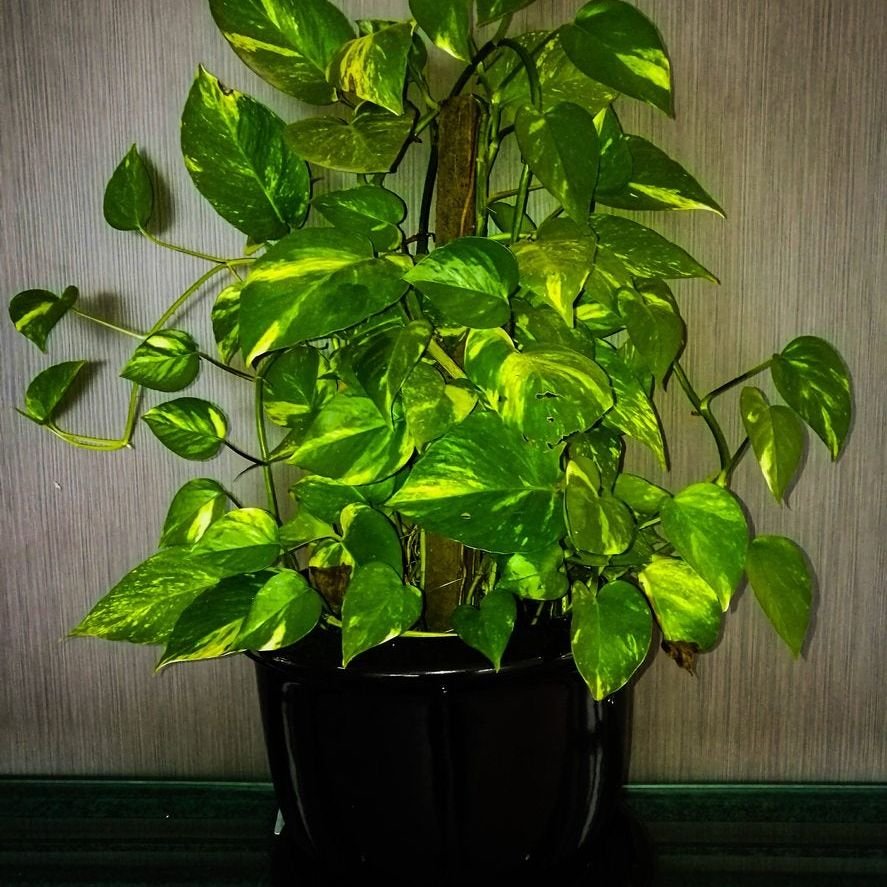
Many plant enthusiasts love misting their tropical houseplants, and while it offers a short-term moisture boost, it’s not the most effective long-term strategy.
When to Mist:
- Early in the morning, so leaves dry by evening (reducing fungal risk).
- During dry months when air conditioning or heating is active.
Tips for Effective Misting:
- Use distilled or rainwater to prevent mineral buildup.
- Mist the air around the plants, not just the leaves.
- Combine misting with other methods like pebble trays or humidifiers for best results.
Excessive misting, especially in low-light or stagnant-air conditions, can lead to mildew or fungal leaf spots — so moderation is key.
7. Control Air Circulation Alongside Humidity
While increasing humidity is essential, ensuring proper air circulation is equally important. Stagnant, overly humid air can create an environment for mold and pests to thrive.
How to Improve Air Movement:
- Use a small oscillating fan near your plants to circulate air gently.
- Keep windows slightly open for fresh airflow when weather permits.
- Avoid placing plants too close together without adequate ventilation.
Balanced humidity with moving air mimics tropical conditions, where moisture is abundant but constantly refreshed by natural breezes.
8. Avoid Common Mistakes When Managing Humidity
Managing humidity might seem simple, but small missteps can quickly harm your tropical houseplants. Here are common mistakes to watch out for:
- Over-misting: Leads to fungal growth and leaf spotting.
- Placing humidifiers too close: Constant wet leaves can encourage rot.
- Neglecting air circulation: Traps excess moisture and fosters mold.
- Ignoring seasonal changes: Indoor humidity drops drastically in winter and rises during the rainy season. Adjust accordingly.
Observing your plants regularly helps you respond to early signs of stress — drooping, browning, or sticky leaves are all clues that humidity may need adjusting.
9. Humidity-Friendly Plant Pairings
Some tropical plants thrive in the same humidity range, making them perfect companions. Here are examples of humidity-loving plants you can group together:
- High-humidity plants (70–80%): Calathea, Ferns, Alocasia, Anthurium
- Moderate-humidity plants (50–60%): Monstera, Philodendron, Peace Lily, Dieffenbachia
- Lower-humidity tolerant plants (40–50%): Snake Plant, ZZ Plant, Pothos
By understanding their moisture needs, you can create visually appealing and biologically balanced plant arrangements that thrive together.
10. Adjusting for Seasonal Changes
Humidity fluctuates naturally with the seasons, so your care routine should adapt accordingly.
- Winter: Heating systems dry indoor air, reducing humidity drastically. Use humidifiers or pebble trays more frequently.
- Summer: Warm air holds more moisture, so humidity is usually higher. Ensure good air circulation to prevent mold.
- Monsoon or Rainy Seasons (in tropical regions): Natural humidity is high, so reduce misting and monitor for fungal issues.
Tracking humidity with your hygrometer helps you make timely adjustments year-round.
Conclusion
Managing humidity levels for tropical houseplants is a delicate balance — too little moisture leads to dry, stressed leaves, while too much encourages fungal problems. By understanding your plant’s natural habitat and recreating those conditions indoors, you can help them thrive beautifully.
Start by measuring your home’s humidity, then experiment with strategies like grouping plants, using pebble trays, or adding a humidifier. Combine these efforts with good air circulation and consistent observation, and soon your tropical plants will reward you with lush, vibrant foliage that radiates rainforest vitality.
With the right humidity balance, your home will not just look greener — it will feel alive.
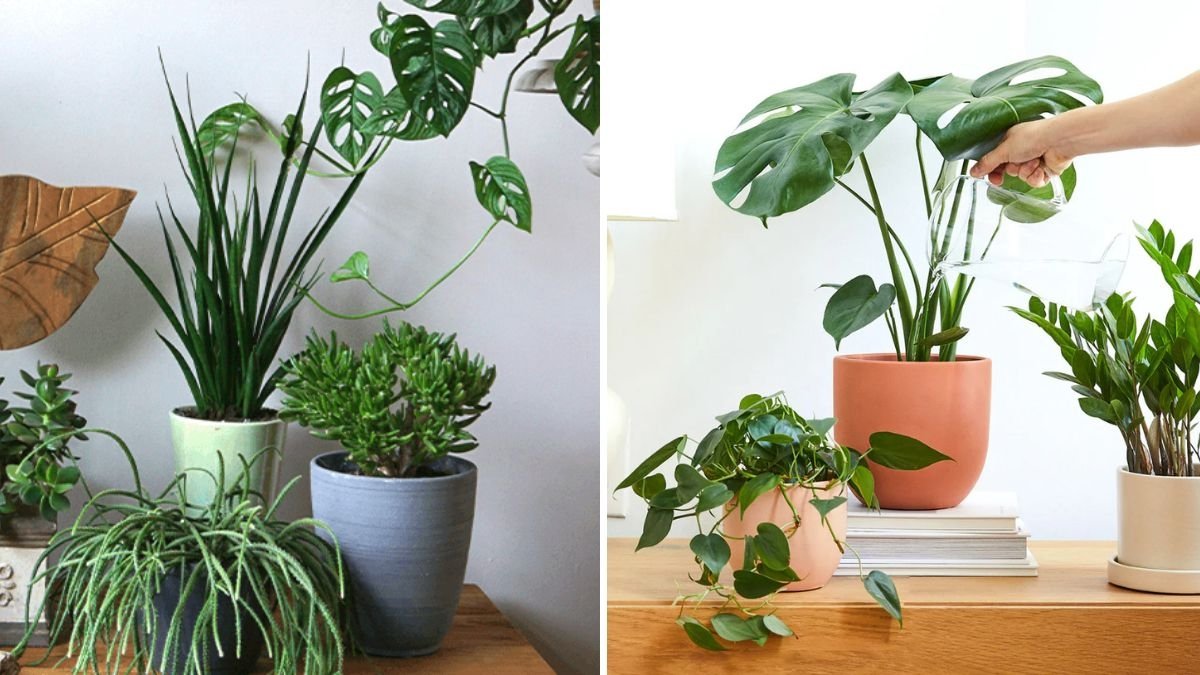




Leave A Comment